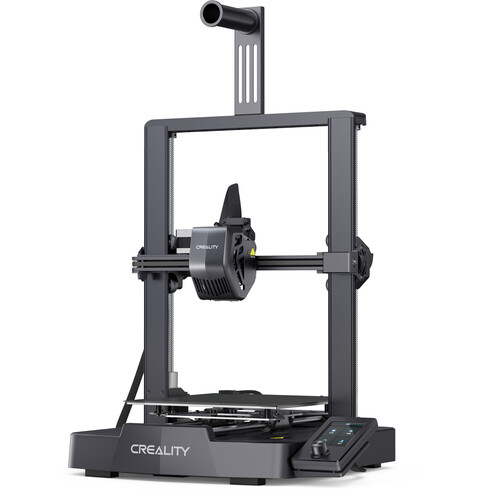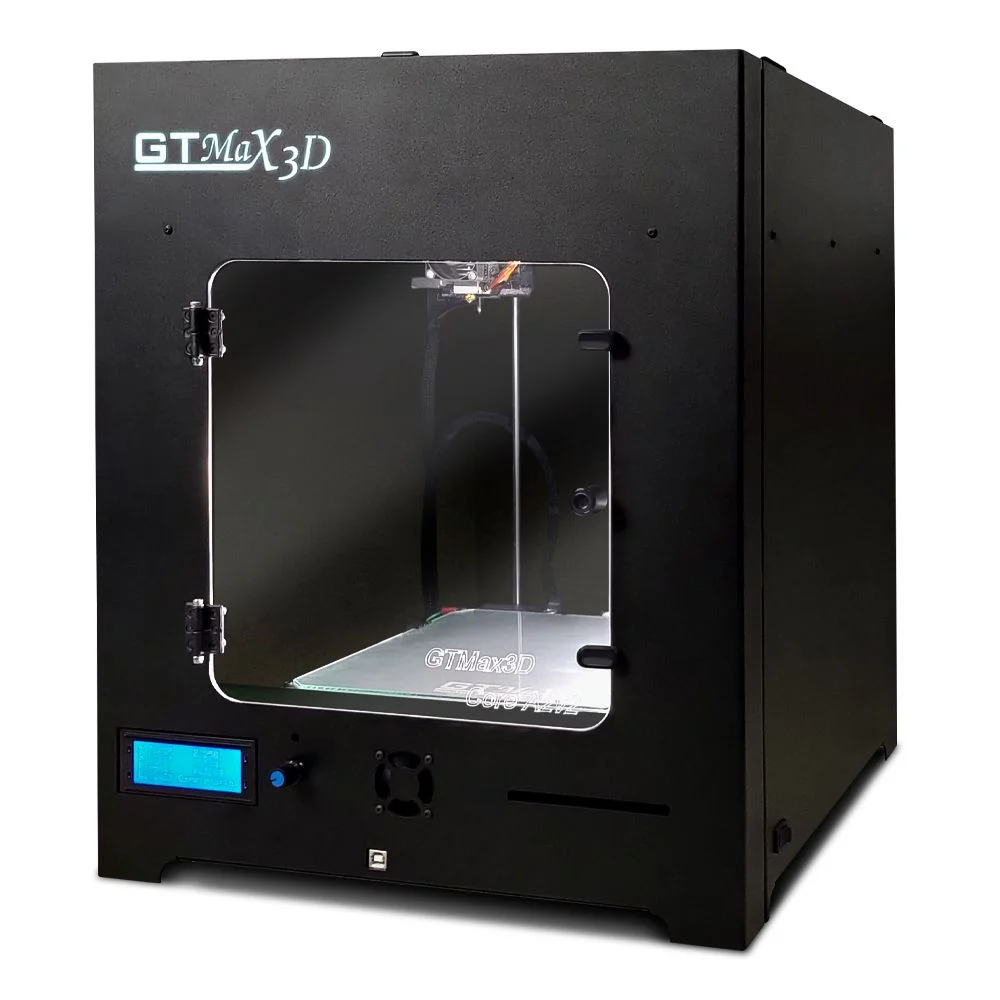Compare Ender 3 V3 SE vs Core A2V2
Comparison between the best 3D printers
Choose the best 3D printer at the best price. The cheapest 3D printers are here.
Buy a 3D printer here with 3D Fila.
 |
 |
|
| Model | Ender 3 V3 SE[BUY Ender 3 V3 SE] |
Core A2V2 |
| Printing Material | Filament | Filament |
| Buy Filament for Creality Ender 3 V3 SE | Buy Filament forGTMax Core A2V2 | |
| Estimated price | $199,00 | $684,00 |
| Manufacturer | Creality | GTMax |
| Release Year | 2023 | 2019 |
| Print Volume [mm] | 220x220x250 | 220x220x240 |
| Printer Size [mm] | 420x366x490 | 425x460x512 |
| Weight [kg] | 7,34 | |
| Power Loss Recovery | NO | YES |
| Enclosed printer | NO | YES |
| Bed Leveling | Automatic | |
| Filament End Sensor | NO | YES |
| Bed type | Heated | Heated |
| Power supply system | Direct Drive | Bowden |
| Standard nozzle | 0,4 | 0,4 |
| Maximum Nozzle Temperature [°C] | 260 | 295 |
| Maximum Bed Temperature [°C] | 100 | 135 |
| Maximum printing speed [mm/s] | 250 | 150 |
| Filament holder | YES | YES |
| Camera for supervision | NO | NO |
| Recommended filaments | PLA, PETG e TPU (95A+) | PLA, PETG, Tritan, Flex, ABS |
| Recommended slicers | Creality Print, Cura 5.0 ou superior, Prusa Slicer, Orca | Cura, Simplify, Slic3r, IdeaMaker |
| Maximum Resolution [mm] | 0,1 | 0,05 |
| Processor | 32-bit Silenciosa | |
| Display | 3,2'' + Knob | Mono |
| Power Supply | 350 W | |
| Connectivity | SD | SD / USB |
| Operating systems | Windows, Linux, Macbook | Windows, Mac, Linux |
| Date of registration in the system | 2024-03-06 | 2022-11-12 |
| Release date | 2023 | 2019 |
| Extra features | The Ender 3 V3 SE stands out for its easy assembly, excellent automatic bed leveling, direct extrusion and easy interface, ideal for beginners. Although it uses a coated PC board, it offers robust performance, with print speeds of up to 250mm/s, thanks to a solid construction and linear rods on the Y axis. It lacks Wi-Fi, preferring file transfer via SD card. | The GTMax3D ProCore A2v2 is a compact and robust 3D printer with a printing area of ??220 x 220 x 240 mm. It offers high print quality, ranging from 0.05 mm to 0.32 mm. Its features include automatic filament detection and changing, travel speed of up to 300 mm/s, and a heated aluminum bed with a glass top. It has automatic bed leveling with 16 points and an all-metal hotend that reaches up to 298°C. The printer has a carbon steel frame with electrostatic painting, is automatic bivolt and has connectivity via USB and SD card. The Bowden system and core xy kinematics complete its advanced features. |
| Support for multiple colors and materials (AMS and CFS) | NO | NO |
Notes * |
||
| Cost-benefit | 7 / 10 | 6 / 10 |
| Hardware | 0.7 / 10 | 2.5 / 10 |
| Tela | . | . |
| Print volume | 3 / 10 | 3 / 10 |
| Performance | 2 / 10 | 1 / 10 |
| [BUY Ender 3 V3 SE] |
Conclusion |
| In conclusion, the comparison between the Ender 3 V3 SE and the Core A2V2 highlights key differences that cater to varying user needs and budgets. The Ender 3 V3 SE, while being significantly more affordable, excels in ease of assembly and automatic bed leveling, making it an excellent choice for beginners. Its high print speed and solid construction provide good performance for standard applications. However, it lacks advanced features such as power loss recovery and filament detection. On the other hand, the Core A2V2, although priced higher, offers a more robust set of features suited for advanced users or those seeking high-quality prints. Its automatic filament detection, superior temperature capabilities, and enclosed design make it an appealing option for a wider range of materials and more complex printing tasks. However, these enhanced features come with a cost both in terms of price and complexity, which may deter entry-level users. Ultimately, the choice between these two printers boils down to the intended use, budget constraints, and desired features. For hobbyists or new users, the Ender 3 V3 SE offers an excellent balance of performance and cost-effectiveness. Conversely, for more experienced users seeking versatility, precision, and advanced features, the Core A2V2 represents a worthwhile investment. |

